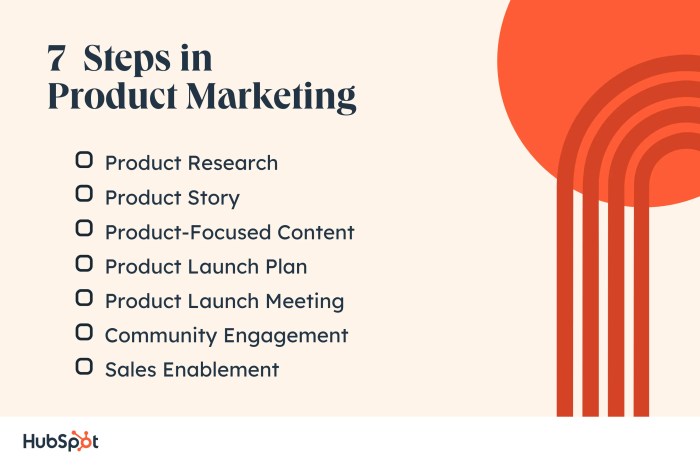Using Product Tutorials for Marketing, dive into a world where tutorials drive success and captivate audiences, revolutionizing the way brands connect with consumers.
From engaging content creation to cross-platform promotion, discover the power of tutorials in elevating marketing campaigns to new heights.
Importance of Using Product Tutorials for Marketing

Product tutorials are key players in the game of marketing, helping to showcase the features and benefits of a product in a visually engaging and informative way. These tutorials can be in the form of videos, step-by-step guides, or interactive demos, providing potential customers with a better understanding of how a product works and how it can solve their problems.
Enhancing Customer Engagement
Product tutorials have the power to keep customers engaged with the brand by offering valuable information in an easily digestible format. By providing tutorials that address common pain points or demonstrate unique uses of a product, companies can build trust and credibility with their audience.
- Tutorials can showcase the features and benefits of a product in a more interactive and engaging way compared to traditional marketing materials.
- Interactive demos can allow customers to experience the product before making a purchase, increasing their confidence in the product’s quality.
- Step-by-step guides can help users navigate complex products or services, reducing confusion and improving overall user experience.
Successful Marketing Campaigns using Product Tutorials
One prime example of successful marketing campaigns using product tutorials is Apple’s launch events for new products. These events often include live demonstrations and tutorials showcasing the features of the latest devices, creating hype and excitement among consumers.
- GoPro’s tutorial videos demonstrating the capabilities of their action cameras have been instrumental in driving sales and brand loyalty.
- Lush Cosmetics’ tutorials on skincare routines and product usage have helped educate customers and establish the brand as a trusted source of beauty expertise.
Benefits of Incorporating Tutorials in Marketing Efforts
Incorporating product tutorials into marketing efforts can have numerous benefits for businesses, including increased brand awareness, customer retention, and sales.
- Enhanced brand awareness through informative and engaging content that showcases the value of the product.
- Improved customer retention by providing valuable resources that help users maximize the benefits of the product.
- Increased sales through effective product demonstrations that highlight key features and address customer pain points.
Types of Product Tutorials
When it comes to marketing products, using tutorials is essential to educate customers about the features and benefits of the products. There are different types of product tutorials commonly used in marketing, including video, written, and interactive tutorials.
Video Tutorials
Video tutorials are popular as they provide a visual demonstration of how the product works. Brands like Apple and Samsung use video tutorials to showcase the functionalities of their latest gadgets. These tutorials are engaging and easy to follow, making it convenient for customers to learn about the product.
Written Tutorials
Written tutorials are in the form of blog posts, user manuals, or step-by-step guides. Companies like IKEA and LEGO provide written instructions on how to assemble their products. Written tutorials are detailed and can be referred to multiple times, making them a valuable resource for customers.
Interactive Tutorials
Interactive tutorials allow customers to actively engage with the product by simulating its usage. Brands like Adobe and Canva offer interactive tutorials to help users navigate their software effectively. These tutorials provide a hands-on learning experience, which enhances customer understanding and retention.
Creating Engaging Product Tutorials: Using Product Tutorials For Marketing
When it comes to creating product tutorials that truly captivate your audience, there are several key elements to keep in mind. By incorporating visually appealing designs, informative content, and engaging storytelling, you can create tutorials that not only educate but also entertain your viewers.
Key Elements for Engaging Product Tutorials, Using Product Tutorials for Marketing
- Visual Appeal: Use high-quality images, videos, and graphics to enhance the overall look of your tutorial. Visual elements can help keep viewers engaged and make the content more memorable.
- Informative Content: Ensure that your tutorial provides clear and detailed instructions on how to use the product. Include tips, tricks, and troubleshooting advice to help users make the most of their purchase.
- Engaging Storytelling: Incorporate a compelling narrative or storyline to make your tutorial more relatable and interesting. By connecting with viewers on an emotional level, you can create a stronger bond and keep them coming back for more.
Utilizing Product Tutorials Across Multiple Platforms

When it comes to marketing your products effectively, utilizing product tutorials across multiple platforms can significantly increase your reach and engagement with potential customers. By repurposing tutorials on different marketing channels, you can showcase your products in various ways and cater to different audience preferences.
Importance of Cross-Platform Promotion
Cross-platform promotion of product tutorials is crucial in today’s digital landscape where consumers engage with brands on various channels. By sharing tutorials on platforms like YouTube, social media, email newsletters, and your website, you can ensure that your content reaches a wider audience and stays relevant in different online spaces.
Strategies for Repurposing Tutorials
- Adapt tutorials for different formats: Transform your video tutorials into step-by-step guides, infographics, or blog posts to cater to audiences who prefer written content.
- Share snippets on social media: Create teaser clips or highlights from your tutorials to grab attention and drive traffic to the full tutorial.
- Collaborate with influencers: Partner with influencers in your industry to create tutorial content that they can share with their followers, expanding your reach organically.
Examples of Brands Leveraging Tutorials Across Platforms
Apple
Apple is known for featuring product tutorials on their website, YouTube channel, social media platforms, and in-store demonstrations. By providing comprehensive tutorials for their products, they educate customers on how to make the most of their devices.
Sephora
Sephora uses product tutorials on their website, mobile app, and social media to showcase makeup techniques, skincare routines, and product reviews. By leveraging tutorials, they enhance the shopping experience for customers and drive sales through educational content.
Measuring the Success of Product Tutorials in Marketing
When it comes to evaluating the effectiveness of product tutorials in marketing, there are key metrics that can help you gauge their impact. Analyzing audience engagement and feedback is crucial in understanding how well your tutorials are resonating with your target market. Additionally, tracking conversions and return on investment (ROI) from your tutorial campaigns is essential for measuring their success.
Key Metrics for Evaluating Product Tutorial Effectiveness
- View Count: The number of views your tutorial receives can indicate its reach and popularity among your audience.
- Engagement Rate: Monitoring likes, comments, and shares can help you determine how engaging your tutorial is.
- Retention Rate: Tracking how long viewers watch your tutorial can provide insights into its effectiveness in retaining attention.
Importance of Analyzing Audience Engagement and Feedback
- Feedback Loop: Gathering feedback from viewers allows you to make improvements and tailor future tutorials to better meet their needs.
- Understanding Preferences: Analyzing audience engagement can help you understand what types of tutorials resonate most with your target market.
Methodologies for Tracking Conversions and ROI
- Conversion Tracking: Utilize tools like Google Analytics to track conversions from your tutorial campaigns, such as sign-ups or purchases.
- ROI Calculation: Calculate the return on investment by comparing the cost of creating and promoting the tutorial to the revenue generated as a result of the campaign.





